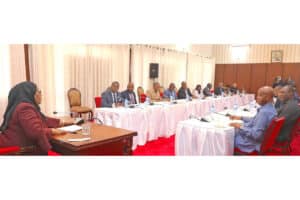ZANZIBAR — THE United States government through the US Agency for International Development (USAID) and the US Centres for Disease Control and Prevention (CDC) joined Zanzibar government to commemorate World Malaria Day and announce a new wide-reaching mosquito nets’ distribution campaign across the Islands.
According to the 2022 Tanzania Malaria Indicator Survey, Zanzibar maintained a malaria rate of less than one per cent for more than a decade. This is due to substantial contributions from the US government through the President’s Malaria Initiative and collaboration with the Revolutionary Government of Zanzibar. Recently, the numbers have risen.
“Despite the decrease in the number of malaria cases in Zanzibar, I have learned that, recently, there are some districts which have experienced an increase in malaria cases. This is not acceptable in Zanzibar. I ask that all measures be taken to control the cases by involving all responsible sectors,” said Zanzibar Minister for Health Nassor Ahmed Mazrui.
This year the World Malaria Day commemoration witnessed the launch of the insecticide-treated net (ITN) mass replacement campaign titled “Usingizi Bul Bul” (Comfortable Sleep). Led by the US President’s Malaria Initiative (PMI), the campaign will distribute 782,000 nets across 314 Shehias in Unguja and Pemba. Zanzibar government also launched the End Malaria Council, which will bolster malaria elimination by advocating for more resources.
“The United States is honoured to join the Zanzibar government in launching the mass replacement campaign for all of Zanzibar and ensuring their proper use. Working together, we are moving communities from awareness to real action,” said USAID/Tanzania Mission Director Craig Hart during the event. “I congratulate the Zanzibar government for also launching the End Malaria Council, which will boost antimalaria programmes by advocating for more resources to support malaria interventions, including partnerships with the private sector.” This mass replacement campaign represents an innovative and comprehensive approach to malaria elimination.
It will use an electronic system to track the quantities of nets, registration of households, and net issuance. It will use SMS to inform households to collect their nets and to distribute messages on net use and care. This system has been supported by the U.S. government through PMI.
Implemented by USAID and CDC, PMI began partnering with Tanzania in 2006 and has invested more than 747 million US dollars in the country.
The United States remains deeply committed to continuing to partner with the government, civil society organisations and the people of Tanzania in the ongoing fight to eliminate malaria and improve the health and wellbeing of its citizens.
Source: allafrica.com














